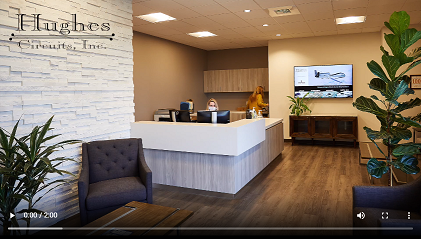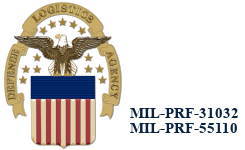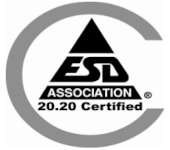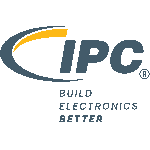Arlon Materials
AD255A Laminate from Arlon
Arlon’s AD255A is a woven fiberglass reinforced PTFE composite material designed as a low-cost laminate with excellent low-loss characteristics. Features of AD255A include lower loss through the use of optimizing the trade-off between thicker and thinner glass styles, strategic use of lower loss ceramics at the exclusion of lossier glass, as well as a tighter DK tolerance. The AD255A design offers a higher degree of performance over comparable legacy PTFE/glass laminates that do not contain ceramic. This results in lower loss, higher antenna efficiencies, lower thermal expansion properties, and greater phase stability.
This material combines the excellent low-loss electrical properties of PTFE resin with the thermal properties of ceramic and the enhanced value of cost-effective fiberglass styles to provide low-cost laminate materials suitable for high-volume commercial wireless communication applications.
The electrical properties of AD255A are highly desired in applications where higher frequency and expectations for increased fidelity with broadband signals are beyond the performance capabilities offered by high-temperature or low-temperature ceramics and thermosets.
The stability of PTFE over a wide frequency range and its low loss properties make AD255A ideal for a variety of microwave and R/F applications in telecom infrastructure. The inclusion of micro-dispersed ceramic provides thermal stability to the laminate in the form of lower CTE values and greater Phase Stability across temperatures. The X and Y CTE matches the CTE of copper.
AD255A is compatible with the processing used for standard PTFE-based printed circuit board substrates. Its low Z-axis thermal expansion improves plated through-hole reliability compared to typical PTFE-based laminates. Low X-Y expansion improves BGA solder-joint reliability.
Features of AD255A
- Very Low Loss PTFE and Ceramic Filled Composite (0.0014 Loss Tangent at Base Station Frequencies)
- Dielectric Constant (2.55) with Tighter Tolerance
- Low Dielectric Loss (Loss Tangent)
- Low Profile Copper (lower conductive losses and lowest PM)
- Low Z-Direction CTE
Benefits of AD255A
- Higher Antenna Efficiencies
- Lower Insertion Loss
- Low PIM for Antenna Applications
- Excellent CTI for Phase Stability
- Ceramic provides a higher degree of Dielectric Constant Stability as Temperatures Change or Cycle
Typical Applications of AD255A
- Base Station Antenna Applications
- Commercial Antennas
- Digital Audio Broadcasting (DAB) Antennas (Satellite Radio)
Links for AD255A
AD260A Laminate from Arlon
Arlon’s AD260A is a woven fiberglass reinforced PTFE composite material designed as a low-cost laminate with excellent low-loss characteristics. Features of AD260A include lower loss through the use of optimizing the trade-off between thicker and thinner glass styles as well as a tighter DK tolerance.
This material combines the excellent low-loss electrical properties of PTFE resin with the thermal properties of ceramic and the enhanced value of cost-effective fiberglass styles to provide low-cost laminate materials suitable for high-volume commercial wireless communication applications.
The electrical properties of AD260A are highly desired in applications where higher frequency and expectations for increased fidelity with broadband signals are beyond the performance capabilities offered by high-temperature or low-temperature ceramics and thermosets.
The dielectric constant has been designed with a 2.60 dielectric constant. To maintain high yields with the end customer, Arlon uses the IPC TM-650 2.5.5.6 (FSR) Test Method on every panel to ensure dielectric constant consistency. The stability of PTFE over a wide frequency range and its low loss properties make AD260A ideal for a variety of microwave and R/F applications in telecom infrastructure. The inclusion of micro-dispersed ceramic provides thermal stability to the laminate in the form of lower CTE values and greater Phase Stability across temperatures.
AD260A is compatible with the processing used for standard PTFE-based printed circuit board substrates. Its low Z-axis thermal expansion improves plated through-hole reliability compared to typical PTFE-based laminates. Low X-Y expansion improves BGA solder-joint reliability.
Features of AD260A
- Low Lost PTFE and Ceramic Filled Composite
- Dielectric Constant (2.60)
- Low Dielectric Loss (Loss Tangent)
- Low Profile Copper (lower conductive losses)
- Low Z-Direction CTE
- Low Thermal Coefficient of Er
Benefits of AD260A
- Low Insertion Loss
- Higher Antenna Efficiencies
- Multiple boards per panel (reduced edge trim waste)
- Large antenna formats
Typical Applications of AD260A
- Digital Audio Broadcasting (DAB) Antennas (Satellite Radio)
- Base Station Antenna Applications
- GPS and RFID Reader Antennas
- Electronic Surveillance, SIG INT, and other RF Applications
Links for AD260A
AD300A Laminate from Arlon
AD300A is a woven fiberglass reinforced PTFE/Microfine Ceramic composite material and is a significant improvement in cost/performance over traditional fluoropolymer-glass laminates. This combination offers designers an advantage for improving electrical performance through the use of advanced material without the additional cost traditionally associated with higher performance.
AD300A offers the Tightest Commercial Dielectric Constant Tolerance in the industry, 3.00 ±0.04. In comparison, competitive offerings are currently at 3.00 ±0.05. This tighter performance provides designers with a higher degree of impedance control, critical for maximum power transfer (S21) and for minimal insertion loss (S11). Combined with AD300A’s low loss properties, these properties lead to higher antenna gain.
AD300A was specifically developed for Base Station Antennas and Base Station Power Amplifiers where low loss and low PIM is critical. Other key performance attributes include low moisture absorption, low thermal coefficient of the dielectric (CTEr), high copper peel strength and good dimensional and thermal stability. The 3.00 Dielectric Constant also provides a small degree of miniaturization that is critical to the size constraints of some antenna designs.
Features of AD300A
- Cost-Effective Construction using a PTFE and Microfine Ceramic Resin
- High Volume Manufacturing Design
- Tightest Commercial Dielectric Constant Tolerance (3.00 ±0.04 vs. Competitive Options at 3.00 ±0.05)
- Excellent PIM Performance
- Reduced Thermal Coefficient of Dielectric Constant (TCer)
- High Thermal Conductivity ideal for Higher Power Designs
Benefits of AD300A
- Low Dielectric Loss (Loss Tangent)
- Low Insertion Loss (S21)
- Excellent Copper Bond Strength
- Low Moisture Absorption
Typical Applications for AD300A
- Base Station Antennas
- Power Amplifiers (PA), Tower Mounted Amplifiers (TMA) and Tower Mounted Booster Amplifiers (TMB)
- Multimedia Transmission Systems
Links for AD300A
AD320A Laminate from Arlon
AD320A is a woven fiberglass reinforced PTFE/Microfine Ceramic composite material and is a significant improvement in cost/performance over traditional fluoropolymer-glass laminates that do not use ceramics. This combination offers designers an advantage for improving electrical performance through the use of advanced material without the additional cost traditionally associated with higher performance.
AD320A was specifically developed for Base Station Antennas and Base Station Power Amplifiers where low loss and low PIM is critical. Other key performance attributes include low moisture absorption, low thermal coefficient of the dielectric (CTεr), high copper peel strength and good dimensional and thermal stability. The 3.20 Dielectric Constant also provides a small degree of miniaturization that is critical to the size constraints of some antenna designs.
AD320A is compatible with the processing used for standard PTFE based printed circuit board substrates. In addition, the low Z-axis thermal expansion provided by the ceramic loading, will improve plated through hole reliability compared to typical PTFE based laminates.
Features of AD320A
- Cost Effective Construction using PTFE and microdispersed ceramic
- High Volume Manufacturing Design
- Excellent PIM Performance
- Reduced Thermal Coefficient of Dielectric Constant (TCer)
- High Thermal Conductivity ideal for Higher Power Designs
Benefits of AD320A
- Low Dielectric Loss (Loss Tangent)
- Low Insertion Loss (S21)
- Excellent Copper Bond Strength
- Low Moisture Absorption
Typical Applications of AD320A
- Base Station Antennas
- Power Amplifiers (PA), Tower Mounted Amplifiers (TMA) and Tower Mounted Booster Amplifiers (TMB)
- Multimedia Transmission Systems








